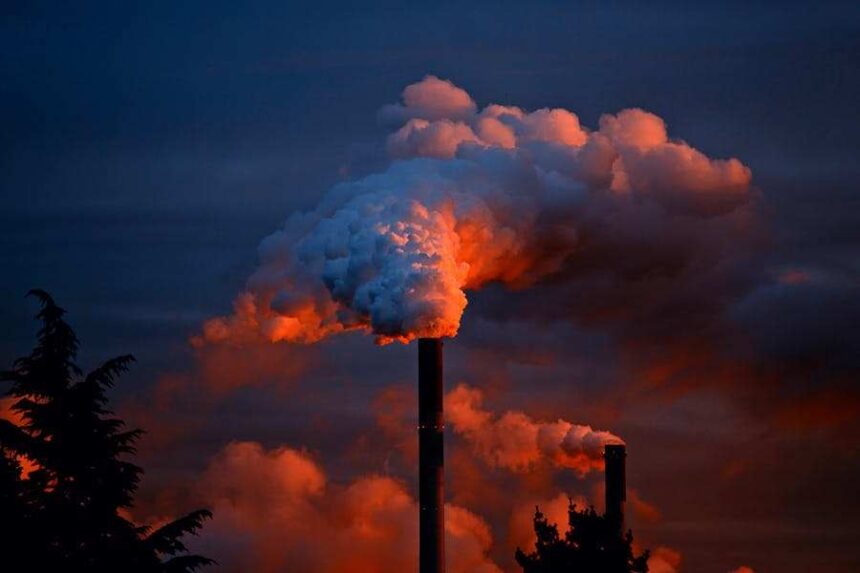Air pollution is a pressing global issue with far-reaching implications for public health, environmental sustainability, and socioeconomic well-being. As the world grapples with the consequences of deteriorating air quality, understanding the sources of pollution becomes paramount. Human activities significantly exacerbate air pollution, whether through industrial processes, transportation emissions, agricultural practices, or residential habits. This article aims to shed light on the diverse human activities contributing to air pollution, highlighting the urgency for concerted efforts to address this multifaceted challenge.
The Activities Contribute To Air Pollution.
Industrial Activities: Industries are significant contributors to air pollution through the combustion of fossil fuels for energy and emissions resulting from manufacturing processes. Power plants, particularly those relying on coal, emit large amounts of pollutants such as sulfur dioxide (SO2), nitrogen oxides (NOx), and particulate matter (PM). Similarly, manufacturing industries release pollutants directly into the atmosphere, including volatile organic compounds (VOCs), heavy metals, and greenhouse gases.
Transportation Sector: The transportation sector is a significant source of air pollution, primarily from the combustion of fossil fuels in vehicles. Cars, trucks, airplanes, and ships emit carbon monoxide (CO), nitrogen dioxide (NO2), and particulate matter. Additionally, traffic congestion exacerbates pollution levels in urban areas, leading to health concerns and environmental degradation.
Agricultural Practices: Agricultural activities contribute to air pollution through various mechanisms. Livestock farming generates methane (CH4) and ammonia (NH3) emissions, contributing to greenhouse gas accumulation and atmospheric pollution. Crop cultivation involves using fertilizers and pesticides, which release nitrogen oxides and VOCs into the air, contributing to smog formation and ozone depletion.
Residential Activities: Household activities such as heating, cooking, and waste disposal also contribute to air pollution. Burning solid fuels like wood and coal for heating releases particulate matter and harmful gases such as carbon dioxide (CO2) and sulfur dioxide. Improper waste disposal methods, including open burning of trash, emit toxic pollutants and contribute to localized air pollution.
Deforestation and Land Use Changes: Deforestation and land use changes release carbon dioxide into the atmosphere, contributing to climate change and air pollution. Additionally, biomass burning associated with land clearing releases particulate matter, carbon monoxide, and other pollutants into the air, impacting air quality regionally and globally.
Commercial and Consumer Practices: Commercial activities, including energy consumption in buildings and manufacturing processes, contribute to air pollution through emissions of greenhouse gases and industrial pollutants. Consumer practices, such as product manufacturing, packaging, and waste generation, also contribute to air pollution by producing pollutants and greenhouse gas emissions throughout the product lifecycle.
Influence Of Socioeconomic Factors
The influence of socioeconomic factors on air pollution is profound and multifaceted, shaping both the distribution of pollution and the ability of communities to address and mitigate its impacts:
Urbanization and Population Density:
Urban areas typically experience higher levels of air pollution due to concentrated industrial activities, transportation emissions, and dense populations. Rapid urbanization exacerbates these issues, increasing energy consumption, traffic congestion, and pollution hotspots. Low-income communities often bear the brunt of urban pollution, residing in areas with limited access to green spaces and higher exposure to industrial emissions and traffic pollution.
Socioeconomic Disparities:
Air pollution disproportionately affects marginalized and low-income communities, exacerbating existing socioeconomic inequalities. Environmental justice issues arise when vulnerable populations, such as racial minorities and low-income households, experience higher exposure to pollution and face barriers to accessing clean air and resources for health protection. These disparities can perpetuate cycles of poverty and health inequities as communities with limited resources struggle to cope with the health impacts of pollution.
Access to Clean Technologies and Infrastructure:
Socioeconomic factors influence access to clean technologies and infrastructure that can mitigate air pollution. Wealthier individuals and communities may have greater resources to invest in cleaner energy sources, energy-efficient technologies, and transportation alternatives such as electric vehicles. In contrast, low-income households may lack access to clean energy options and rely on older, more polluting technologies for heating and cooking, exacerbating indoor and outdoor air pollution.
Policy and Regulatory Frameworks:
Socioeconomic factors also play a role in shaping policy responses to air pollution. Wealthier communities may have more political influence and resources to advocate for stricter environmental regulations and enforcement measures. In contrast, marginalized communities may face challenges accessing information, participating in decision-making processes, and holding polluters accountable for environmental violations. Strengthening environmental governance and promoting inclusive policymaking are essential for addressing environmental injustices and ensuring equitable access to clean air.
Health and Economic Impacts:
Socioeconomic status influences the health impacts of air pollution and the economic burden of related healthcare costs and lost productivity. Low-income individuals and communities are disproportionately affected by respiratory diseases, cardiovascular problems, and other health issues associated with air pollution exposure. Moreover, the economic costs of air pollution, including medical expenses and reduced labor productivity, place a heavier burden on vulnerable populations already facing economic hardship.
Global Perspectives And Solutions
Global perspectives on air pollution emphasize the interconnected nature of environmental challenges and the need for collaborative solutions at international, regional, and local levels. Addressing air pollution requires a multifaceted approach integrating technological innovation, policy coordination, and public engagement. Critical perspectives and solutions include:
Global initiatives such as the Paris Agreement and the United Nations Sustainable Development Goals (SDGs) provide frameworks for international cooperation on climate change mitigation and sustainable development, closely linked to efforts to reduce air pollution. These agreements promote cross-border collaboration, knowledge sharing, and capacity building to address common environmental challenges and achieve collective emissions reduction targets.
Advancements in clean energy technologies, pollution control measures, and sustainable transportation solutions offer promising opportunities to reduce air pollution at the source. Renewable energy sources such as solar, wind, and hydroelectric power can help decarbonize energy systems and reduce reliance on fossil fuels. Additionally, innovative technologies for emissions control, such as catalytic converters, particulate filters, and scrubbers, can minimize pollution from industrial processes and transportation.
Promoting sustainable consumption and production patterns, as outlined in initiatives like the circular economy framework, can help reduce human activities’ environmental footprint and mitigate air pollution. Encouraging behavior changes such as energy conservation, waste reduction, and eco-friendly transportation options can also contribute to cleaner air and healthier communities. Public awareness campaigns, educational programs, and community engagement initiatives are crucial in fostering a culture of environmental stewardship and empowering individuals to take action.
Strengthening environmental regulations, enforcing emission standards, and implementing pollution control measures are essential for reducing air pollution and safeguarding public health. National, regional, and local governments play a central role in developing and implementing policies to mitigate pollution from key sources such as industry, transportation, and agriculture. Market-based mechanisms such as emissions trading systems and carbon pricing can provide economic incentives for pollution reduction and drive innovation in clean technologies.
Recognizing the link between air pollution and public health, policymakers and stakeholders increasingly prioritize initiatives that protect vulnerable populations and promote environmental justice. Investing in healthcare infrastructure, improving access to clean air and water, and addressing socioeconomic disparities are integral components of comprehensive strategies to combat air pollution and its adverse health effects. Engaging with affected communities, including indigenous peoples, frontline workers, and marginalized groups, is essential for developing inclusive and equitable solutions that address local needs and priorities.
Bottom Line
Air pollution is a complex and urgent global issue with far-reaching consequences for public health, the environment, and socioeconomic development. Tackling this challenge requires collaborative efforts, innovative solutions, and inclusive policies prioritizing all communities’ well-being. Addressing the root causes of air pollution and promoting sustainable practices can create a cleaner and healthier world for current and future generations.




